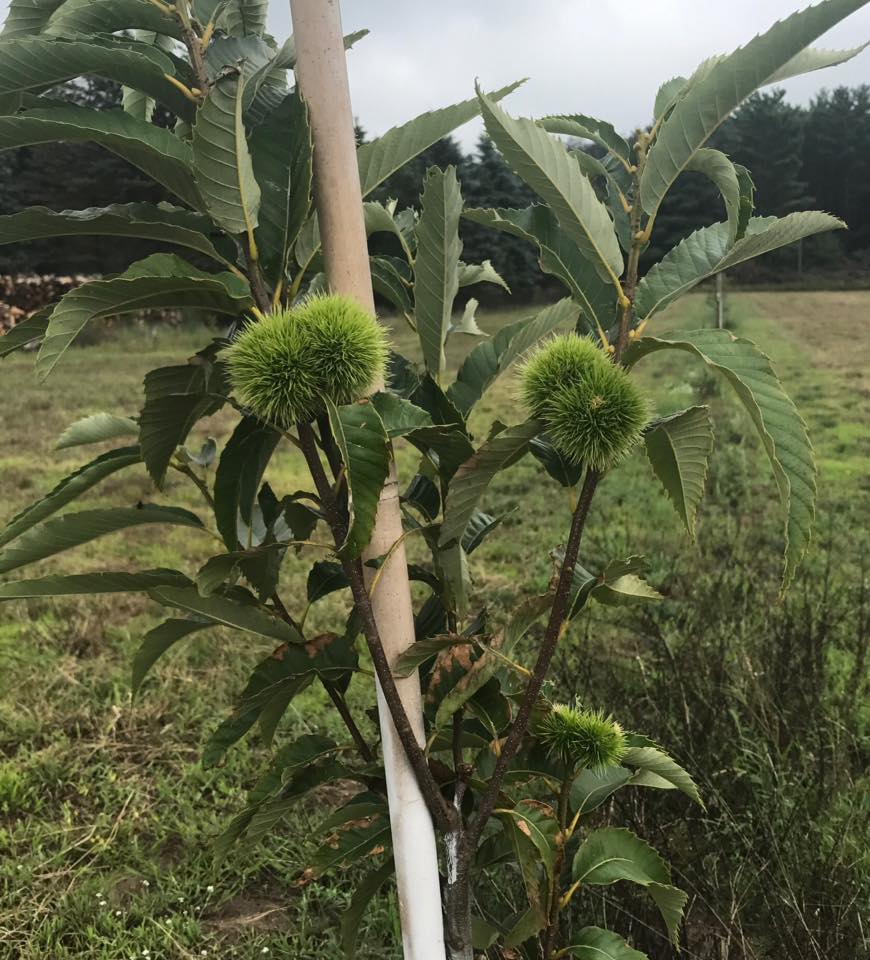There are several varieties of sweet (eating) chestnuts which are grouped into four main species. They are American, Chinese, European and Japanese. Our orchard is composed of European-Japaneese hybrid trees.
American chestnuts are still around in small groves but many died out due to chestnut blight. There is a salve developed by MSU that can be applied to infected trees. Some orchards still plant American Chestnut trees.
Chinese chestnuts are mostly blight resistant but produce smaller nuts. They are favored in food plots or other natural settings and are less desirable for the commercial market due to the smaller nut size.
European chestnuts offer good size nuts in high demand by consumers. There are still many varieties of trees under the European Chestnut umbrella.
Producers
These are the tree cultivars selected to yield large crops of nuts each year.
Colossal
Named for it’s very large nut, this variety is a standard in many orchards. It is susceptible to blight and gall wasp.
Bouche de Betizac
High yielding large chestnut producing variety. Early budding variety that is sensitive to spring frost. Low blight and gall wasp susceptibility.
Szego
Good cold hardiness, high yield large nuts.
Pollinators
These are the tree cultivars selected to produce the most pollen. Chestnut pollen is spread mostly by the wind and not so much by insects. Selecting trees with abundant pollen is very important.
Precoce Migoule
Popular in commercial orchards. Tree itself is cold hardy but early buds are frost sensitive. Produces some nuts but much fewer than the producer varieties.
Maraval
Medium fertility pollen. This variety is very good for root stock with only a few graft incompatibilities. Trees are more tolerant of wider range of soils.
Marigoule
Medium quality pollen. Prefers low altitude, sunny and wind protection. Cold sensitive. Fast growing.
